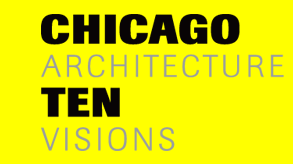 |
 |
|
|
|
|
JOE VALERIO
Chicago and the Midwest have served as Joe Valerio’s home throughout his professional career. He attended the University of Michigan and then left the area for a short period of time to earn his master of architecture degree at the University of California at Los Angeles (UCLA). In 1973 he became an associate professor at the University of Wisconsin–Milwaukee’s School of Architecture and Urban Planning. He returned to Chicago in 1985 to pursue his professional career, working with other architects before starting his own firm, Valerio-Associates, Inc., in 1988. In 1994 Valerio-Associates, Inc. merged with another Chicago firm, Dewalt Train Associates. The business and technical strengths of the latter were added to the design skills of Valerio-Associates. Valerio’s work has been recognized by the American Institute of Architects on a national and regional level. Examples of his firm’s work in the Chicago area include the main store and Rooftop Café at Lincoln Park Zoo, the Midwest corporate campus of the 3-Com Corporation, and Lipson Alport Glass and Associates headquarters.
|
 |
Enigma of the Room
This installation highlights the opposition of real versus virtual space through a highly choreographed field of aluminum plates. Architecture, which is sculptural and ambiguous, is open to many interpretations and allows people to reach their own understanding of a place. The video camera offers a single interpretation of the same experience, with one point of view. While walking through this pavilion, the room offers these contrasting visions, for both a real and an imaginary experience.
Architect’s statement
Architecture offers a view of the world that is open to many different interpretations and allows people to reach their own understanding of a place. Ultimately, architecture is sculptural, energetic, emotional—and ambiguous. This ambiguity is its strength. The video camera offers the nightmare of a single interpretation of the same experience. It is relentless, seductively insisting it offers the only view. The camera oversimplifies and implies there is no ambiguity. Our room presents these contrasting visions simultaneously and offers the visitor both a real and an imaginary experience.
The viewer walks into the room, which is divided and shaped by a highly choreographed ballet of aluminum plates suggesting movement, complexity, and uncertainty. Each assembly of metal plates springs from a square of aluminum panel in the floor; these identical panels each hold a television monitor. Walking up to one of the monitors, the viewer sees four identical aluminum boxes. As they stare at the screen, the viewer realizes they appear to be standing inside one of the containers. Only then do they understand that the room they are in and the room viewed by the camera are the same space.
|
|
 |
|
|
